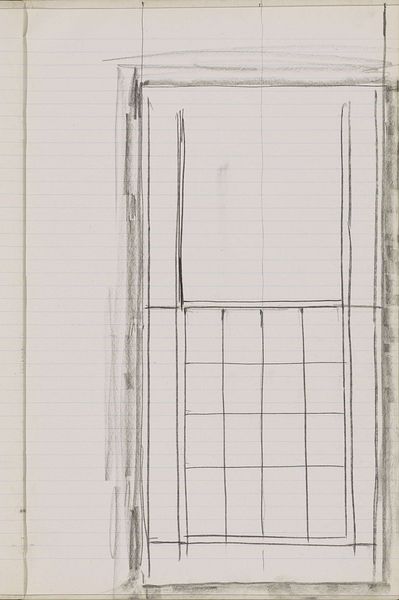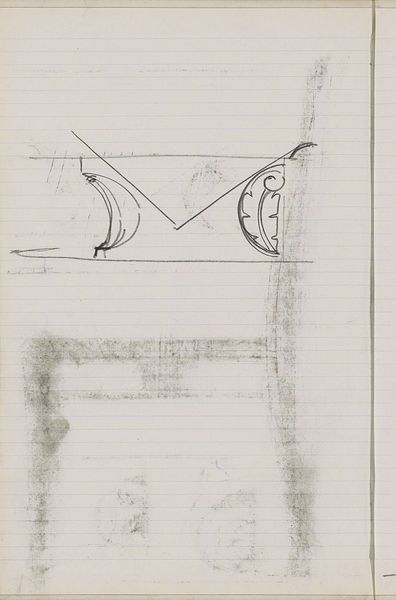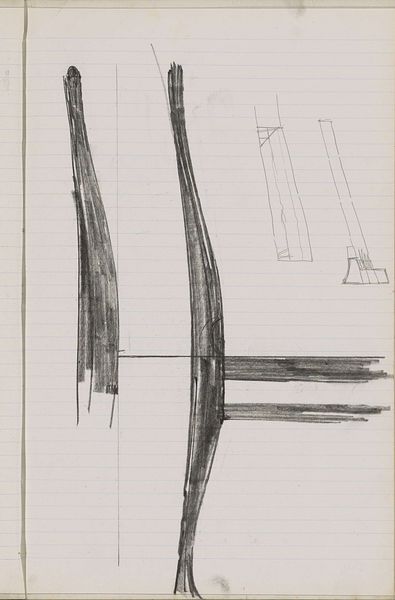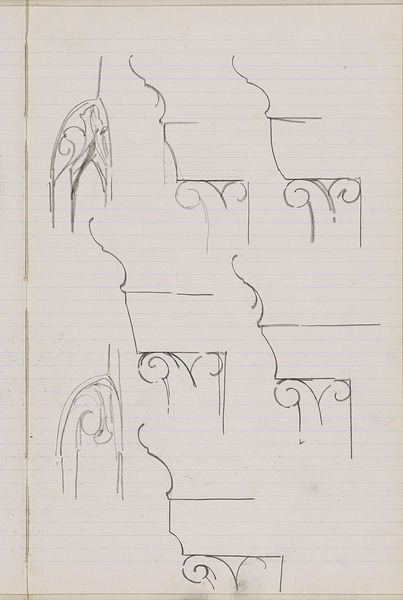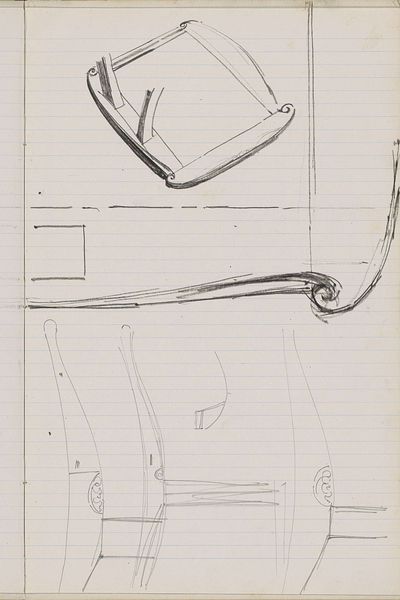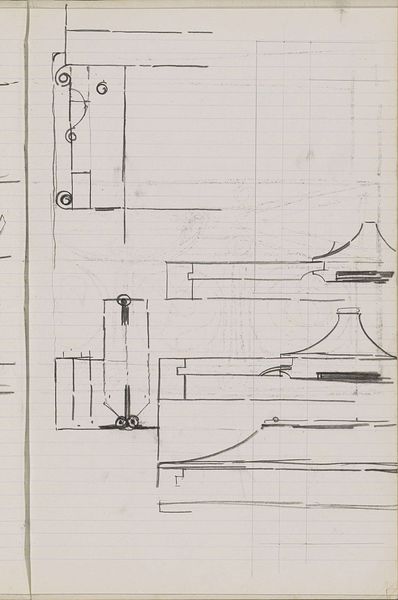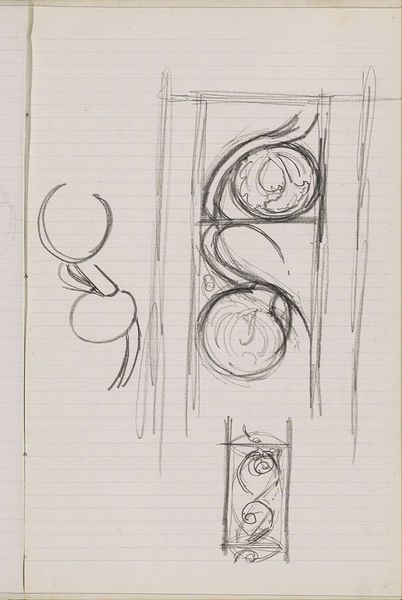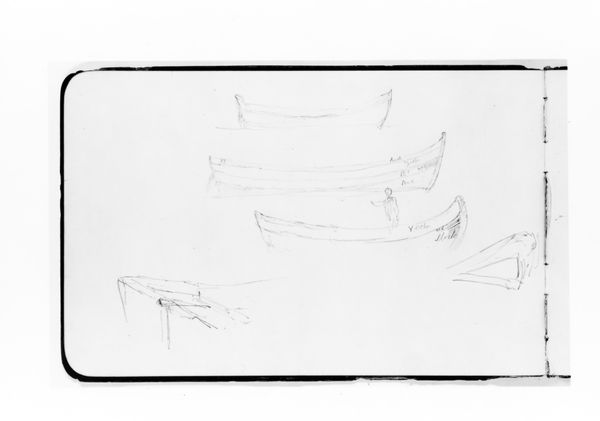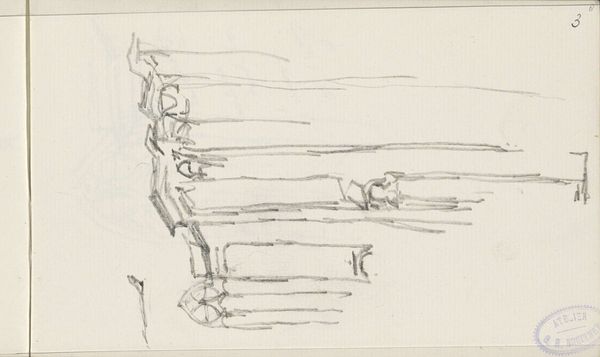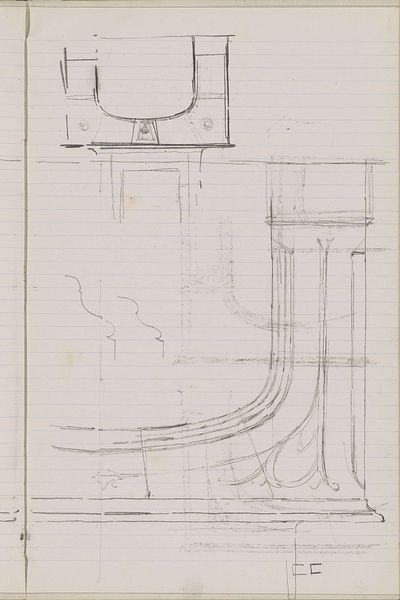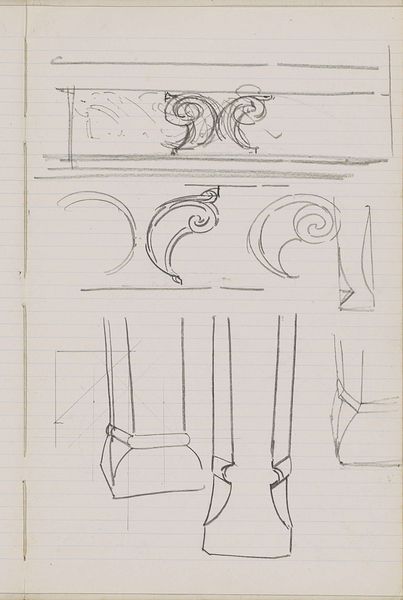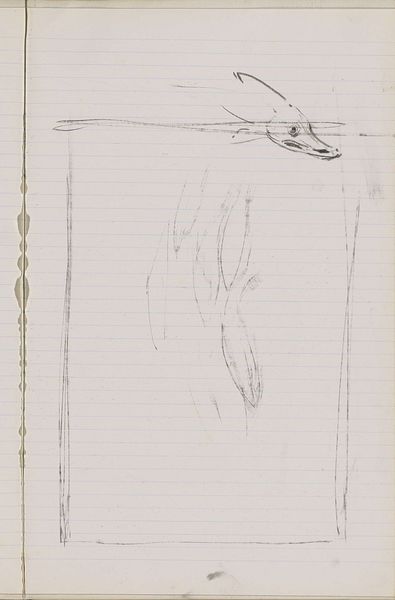
drawing, paper, pen, architecture
#
drawing
#
amateur sketch
#
art-nouveau
#
sketch book
#
hand drawn type
#
paper
#
form
#
personal sketchbook
#
idea generation sketch
#
sketchwork
#
detailed observational sketch
#
line
#
sketchbook drawing
#
pen
#
sketchbook art
#
architecture
#
initial sketch
Copyright: Rijks Museum: Open Domain
Curator: Here we have Gerrit Willem Dijsselhof’s "Ornamentele kroonlijsten," a pen drawing on paper from around 1901, currently held at the Rijksmuseum. Editor: My first impression is one of thoughtful observation; it’s more of a detailed, working study than a polished piece. The materiality feels so immediate, almost like eavesdropping on the design process. Curator: I agree. Note the way Dijsselhof meticulously details various cornice designs. Each flourish, each line, speaks to a deliberate aesthetic, echoing Art Nouveau’s emphasis on organic forms and its integration with architecture. Cornices were rarely purely functional, even for the working class. Editor: The symbols in these cornices feel so deliberate. That repeating floral motif...and is that a stylized animal head right at the top? It is almost like an architectural bestiary. Are they merely decorative or did they evoke deeper symbolic narratives, resonating with turn-of-the-century sensibilities about nature and progress? Curator: It's interesting to consider. The very act of sketching these elements speaks to the broader material culture of the time, I think. We must consider how Dijsselhof engaged with craftsmanship. How were these drawings potentially translated into actual, physical cornices by skilled laborers? What sort of workshops might have existed? What were their limitations in execution of ideas like this one? Editor: True, tracing these back to those makers opens so many important avenues, but consider how powerful and lasting certain symbols become! Perhaps the artists’ choice of forms tapped into collective memories, embedding enduring narratives within the built environment for generations? I am thinking of Ancient Greek symbols persisting in architecture in the modern age! Curator: A vital consideration. The process and the symbols worked hand-in-hand; the artist couldn't pursue one without the other, no matter how he rationalized it. Without knowing how they are crafted and constructed, those images can mean little! Editor: Yes, in a similar fashion. Without decoding these recurring patterns, however, without looking to the source, the culture surrounding the artist, it is equally impossible to decode its potential. Curator: A valuable reminder. Examining Dijsselhof's craft underscores how profoundly interconnected artistic vision and material execution really were, regardless of who held which knowledge. Editor: I concur. By looking at these recurring decorative elements in the drawing through historical, anthropological and psychological lenses we could better reveal shared ideals and long-held cultural assumptions of the society the cornices were meant for.
Comments
No comments
Be the first to comment and join the conversation on the ultimate creative platform.
